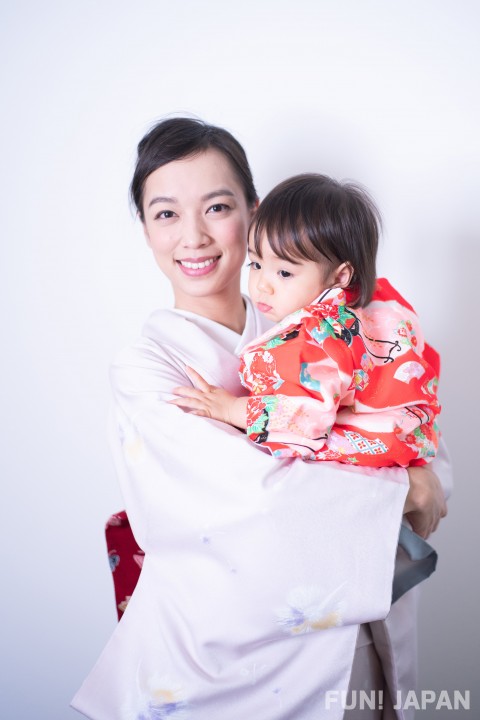
Even in Japan, babies and children rarely wear kimono on a daily basis. But wherever the need arises, so comes the opportunity to wear one. For example, the 7th day after birth, the first visit to the shrine known as "Omiya-mairi" (お宮参り), "Hatsu-Zekku" (初節句 first festive celebration or first sekku), etc. This time, we will introduce all of baby kimono along with related Japanese customs.
Baby Kimono Worn on the 7th Day after Birth
Traditional Japanese customs include a ritual called "Sode-toshi" (袖通し slipping into the sleeve), which is to make the child wear a kimono on the 7th day after birth. Here, we will introduce the materials, patterns, and colors of the kimono worn on this occasion, along with their meaning.
Baby Kimono: Materials and Patterns
Originally, baby wears white kimono with a hemp leaf pattern. The material may be hemp or silk, though recently cotton is also used. The pattern of hemp leaf means "to grow strong".
Hemp Leaf Pattern's Colours and their Meaning
- Yellow: Turmeric is used, and it has a meaning of warding against evil and a practical purpose as insect repellent.
- Red: Safflower is used, and it is a sacred colour that chases away demons. In the case of girls, it also represents a wish for being blessed with good relationships.
- Blue: Indigo is used. Indigo or Ai (藍) has the meaning of an old Chinese tradition, "the student surpasses the master." Therefore, it represents the parents' wish that "the boy will be a great people who surpass their parents".
Baby Kimono Worn on the First "Omiya-mairi"
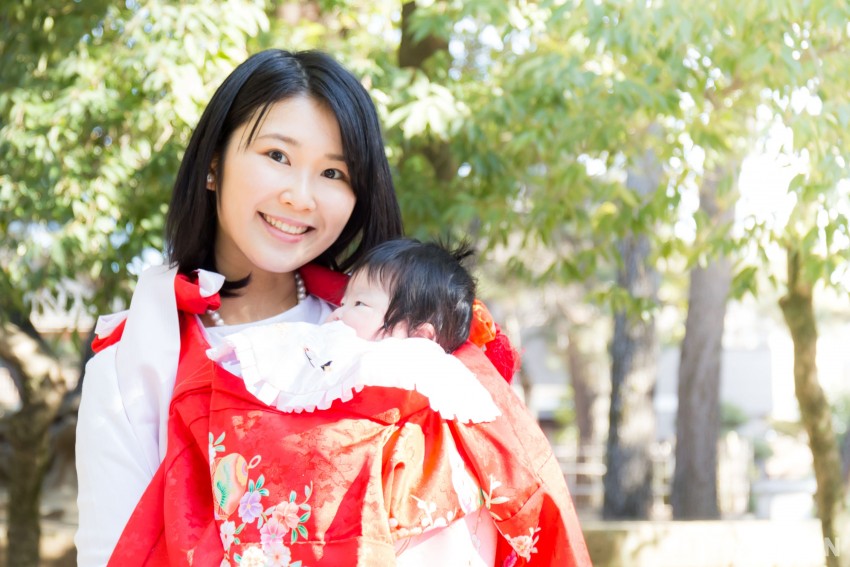
Here we will introduce the traditional Japanese baby event "Omiya-mairi" and the kimonos worn in this occasion.
Omiya-mairi (お宮参り), Celebrating Babies' Birth at Shrines
This is done about a month after the baby is born. The child will be made to worship the local god; boy on the 31st day after birth, and girls on the 33rd day after birth. It is a traditional Japanese ritual to make a child be blessed as protected by the local deity as the deity's new ward.
Baby Formal Attire
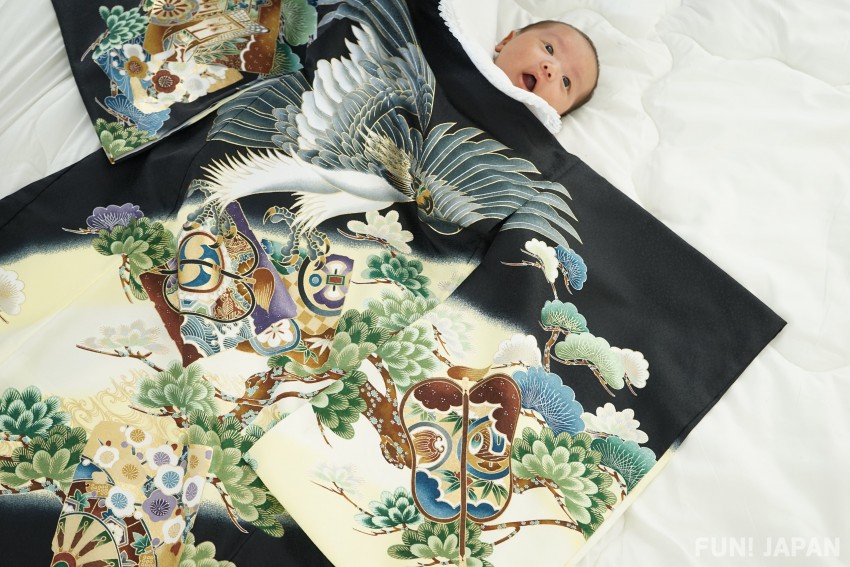
Japanese attire with Shirohabutae (白羽二重 double-layered white wing) as inner garment for the child, then put Iwaigi (祝い着 celebratory garment) on top. For boys, iwaigi using black or blue colour and hawks, samurai helmets (兜 kabuto), dragons, tigers, or other patterns with strong images are popular. For girls, red colour and patterns with a gorgeous and elegant images such as butterflies, hand-balls (手毬 temari), bells, court carriage (御所車 gosho-guruma) and drums are popular.
Baby Kimono Worn on Hatsu-Zekku
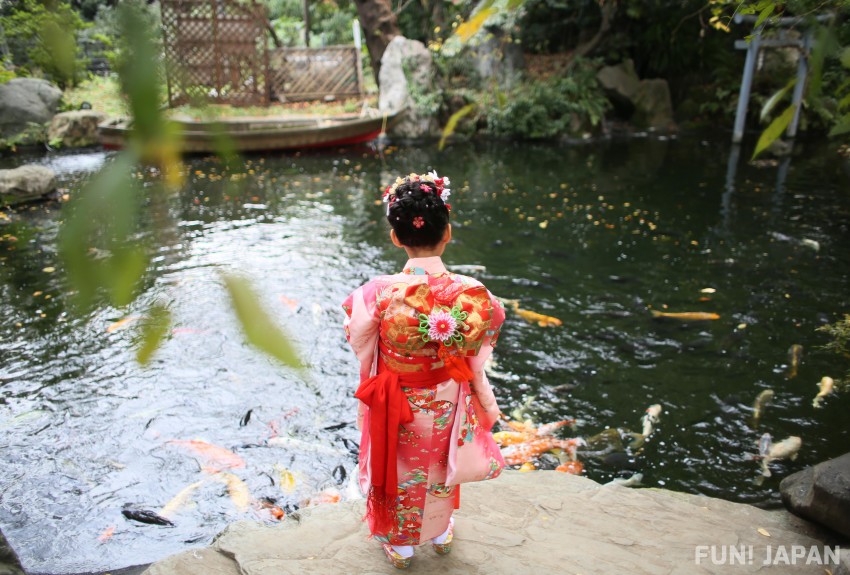
Here, we will introduce traditional Japanese children's festivals and kimonos worn in these occasions.
Children's Festivals (節句 Sekku)
For sekku (festive celebrations), boys and girls have different dates and events, but they all celebrate and wish for the healthy growth of children. Boys' sekku is the Tango Festival (端午の節句 tango no sekku) on May 5th every year, and girls' sekku is the Peach Festival (桃の節句 momo no sekku) on March 3rd every year.
Formal Attire for the First Sekku
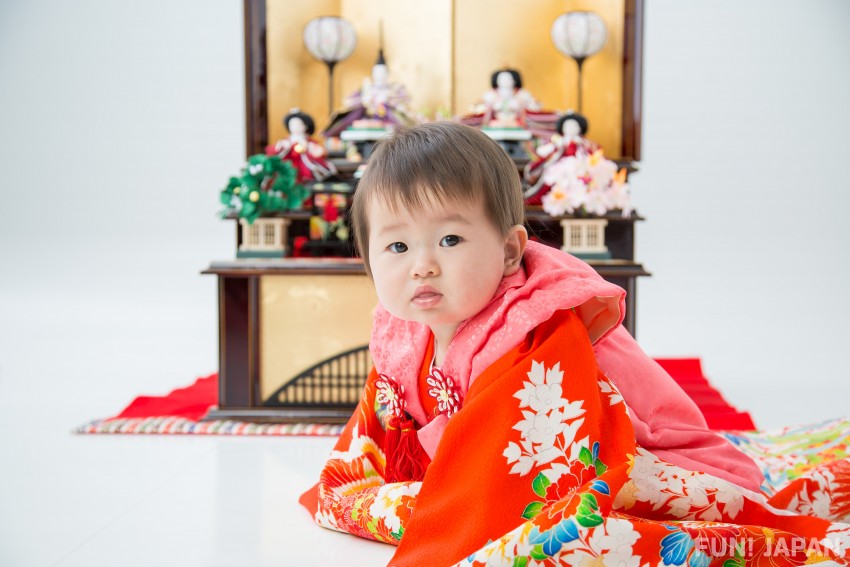
The very first sekku after a child's birth is called the Hatsu-zekku, and the child wears a special kimono on that day. It is the kimono that the child wore at the baby event "Omiya-mairi" mentioned above. The parents have to keep it carefully.
Baby Kimono Worn at the Children's Event "Shichi-go-san"
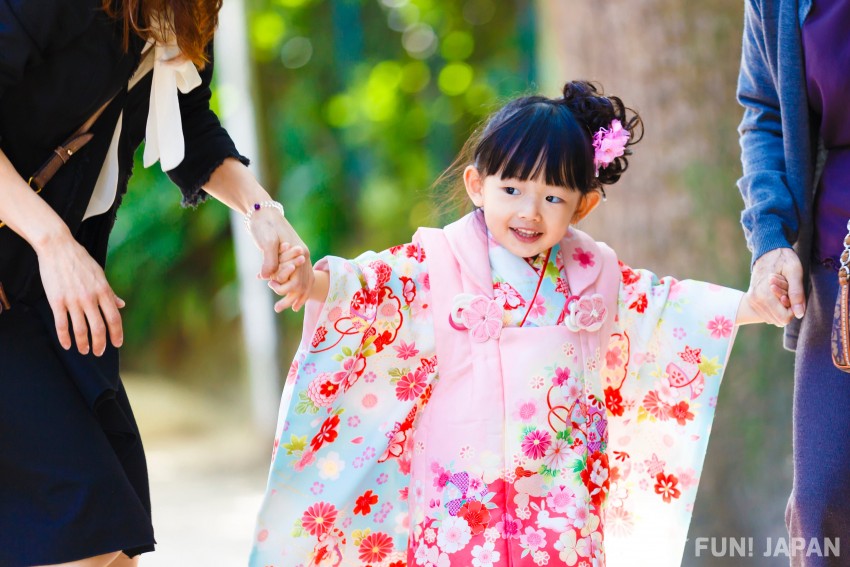
Here, we will introduce another traditional Japanese children's event and kimonos worn in this occasion.
Shichi-go-san (七五三 Seven-five-three)
This event is the same for boys and girls: on November 15th. Shichi-go-san is a traditional event to pray for the healthy growth of children when they are three, five, or seven years old. In each occasion, the children will come in a fine dress and visit the shrine.
Formal Attire for "Shichi-go-san"
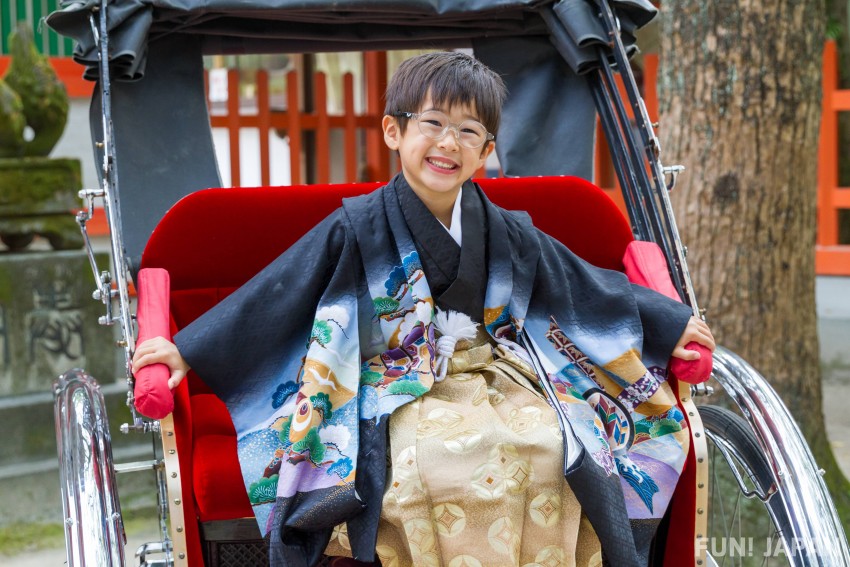
- 3 years old: Participated by boys and girls. Boys wear haori and hakama based on white and black colours. Girls wear the same kimono as adults, but the obi is a soft Heko Obi (兵児帯) that is used when wearing a yukata. On top of the kimono, girls will wear a cloth called Hifu (被布), which is a sleeveless jacket similar to a vest.
- 5 years old: Participated by boys. Wear haori and hakama based on white and black colours.
- 7 years old: Participated by girls. Wear the same kimono as an adult. However, the hifu is tied with a core-less band called Shigoki (志古貴) underneath the band, instead of wearing like a jacket. The Obi-age (帯揚げ) and Obi-shime (帯締め) are worn to decorate the obi almost in the same way as an adult kimono. On the chest, a small accessory called "Hakoseko" (筥迫) and a folding fan (扇子 sensu) are inserted to dress as a decoration.
In old Japan, the mortality rate of small children was very high. For this reason, various events have come to be held in the hope of thanking God at each turning point in life and wishing for happiness and warding off bad things in the future. At such times, people make children wear kimonos with a wish to pray for gods and to ward off evil. Even in modern Japan, these events and kimonos have been passed down with care.
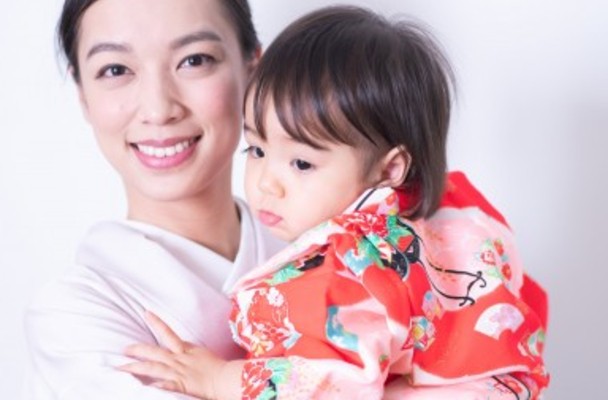
Comments